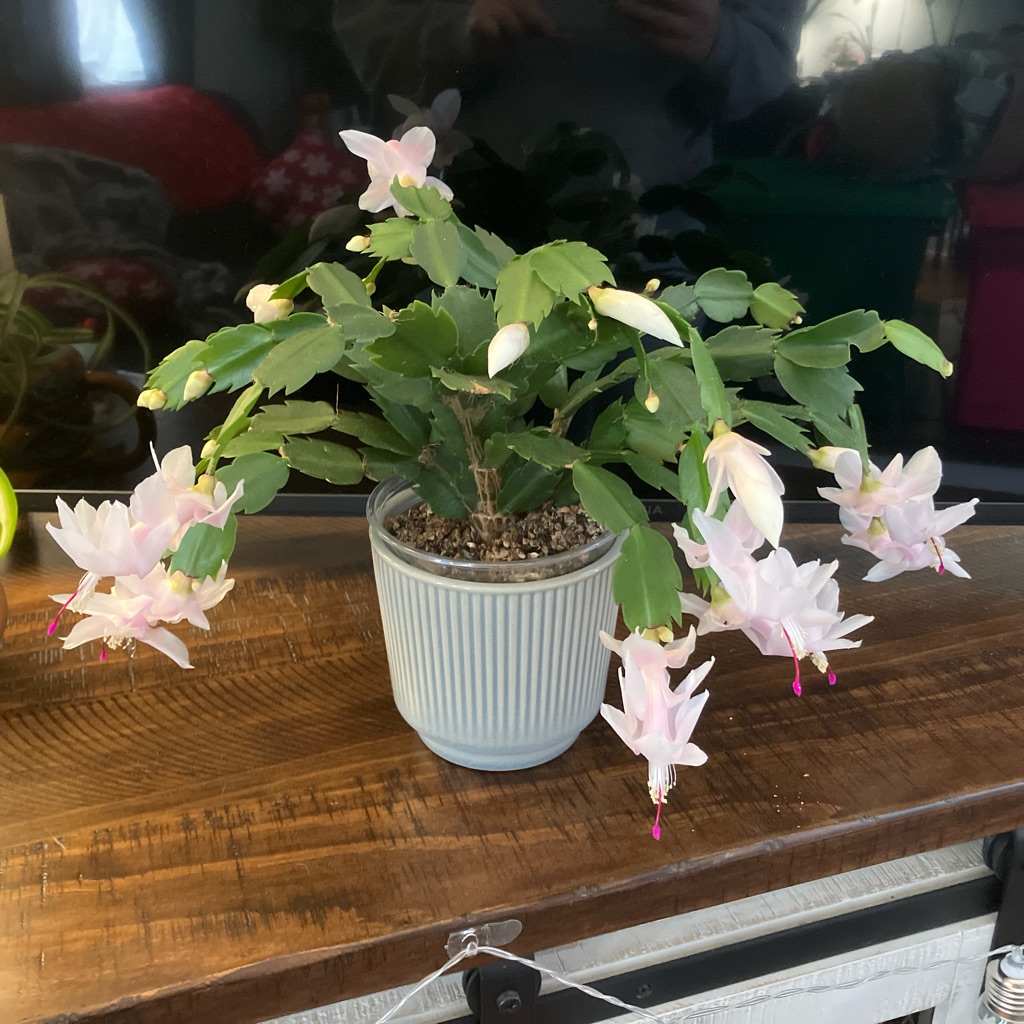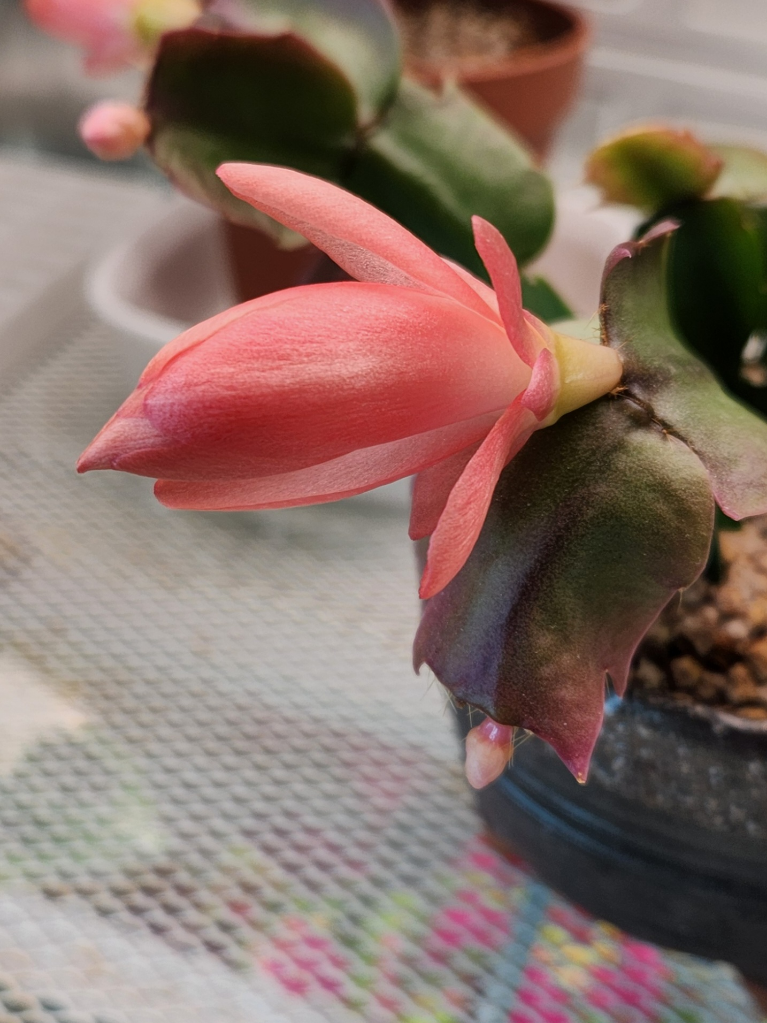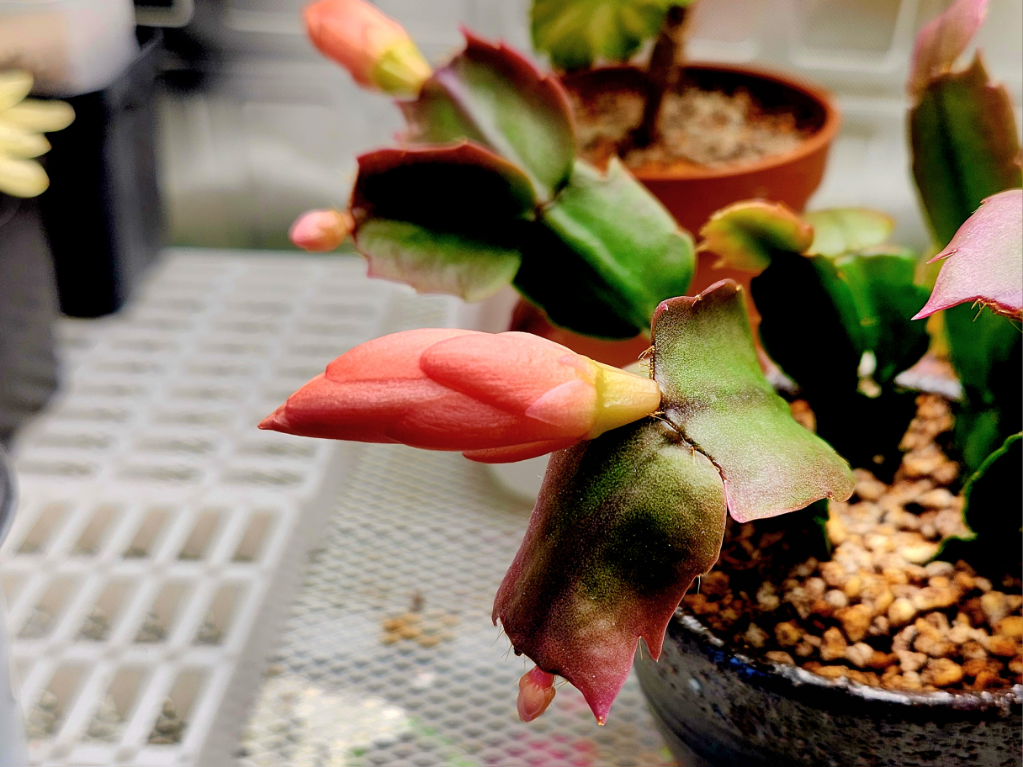How to grow and care for Rhipsalidopsis gaertneri (K.Schum.) Linding.
plant care guide about watering, fertilizing, trimming, repotting, cutting, propagating Rhipsalidopsis gaertneri (K.Schum.) Linding., Holiday cactus, Whitesun
Rhipsalidopsis gaertneri (K.Schum.) Linding. 101 - Plant Care Instructions
Bright indirect light
18C° ~24C°
Every 14 days
Growth Observation wiki
Botany Encyclopedia
Family : Cactaceae
🌿 Photosynthesis
Most plants in this family use CAM (Crassulacean Acid Metabolism) photosynthesis, typical of desert plants. This means they close their stomata during the day to minimize water loss and perform photosynthesis at night. Therefore, it's best to water them at night. However, they are sensitive to overwatering, so they should be kept in a well-ventilated, dry environment.
🎋 Stem
It has a succulent stem that performs photosynthesis and stores water instead of leaves. At the junction of the stem and spines, there are small spine cushions, called areoles, which protect the growing points. This characteristic distinguishes it from typical succulents.
🪴 Root&Soil
Most have shallow, widely spreading roots. Therefore, they do better in wide, shallow pots rather than deep ones.
Species : Rhipsalidopsis gaertneri (K.Schum.) Linding.
🏝️ Habitat Conditions
It is native to South America and thrives as an epiphyte in tropical rainforests. It prefers indirect light over direct sunlight and should be grown in a warm, humid environment similar to a rainforest. It is sensitive to cold and cannot survive outdoors in winter.
🪨 Soil Mix
It is best to plant in well-draining soil. A common mix ratio is 40% potting soil, 20% bark, 20% leaf mold, 10% perlite, and 10% charcoal. This can vary depending on conditions and environment.
🌡️ Environment
Maintain daytime temperatures between 18-23°C and nighttime temperatures above 10°C, with a minimum of 5°C. The plant prefers a humid environment with 50-70% humidity. Regular misting or placing water nearby can help increase humidity. Ensure good air circulation to prevent pests and diseases in high humidity conditions.
👀 Characteristics details
In their natural habitat, they grow epiphytically, making it possible to hang them indoors for decorative purposes.
☀️ Light
Epiphytic plants naturally grow under trees and do not receive direct sunlight. Therefore, it is better to provide them with indirect light for extended periods rather than direct sunlight.
💧 Water
Unlike most cacti, this plant prefers more water. From spring to fall, water it when the surface soil dries out. In winter, water it when the inner soil dries out. As a CAM plant, it closes its stomata during the day to reduce transpiration, so it's best to water it in the evening.
🌱 Propagate
Propagation is mainly done through cuttings, ideally 2-3 months after flowering. Use sterilized tools to cut 10-20 cm branches at an angle, dry them for 3-4 hours, then place them in soil or water for propagation. 1. For water propagation, avoid transparent containers. Place the stem in water, and once roots appear, add hydroponic fertilizer. When roots are 5-7 cm long, transfer to soil. 2. For soil propagation, plant deeply in soil without fertilizer. After propagation, avoid exposing to bright light. Gradually increase light exposure to help the plant adapt. Maintain high humidity and a temperature of 20-25°C.
🪴 Repot
Due to its slow growth, it is advisable to repot the plant every 2-3 years after the flowers have wilted.
💊 Fertilize
Use fertilizer once during spring and summer, following the recommended amount, to see more vigorous growth.
🌺 Flower
The blooming period is from winter to spring, lasting about 2-4 weeks. To bloom, the plant needs to be exposed to low temperatures of 10-13°C for about 6-8 weeks. It also requires long nights of 12-14 hours in darkness. If the plant is in a bright area at night, cover it with a box or plastic bag to block the light.
water
How to water Rhipsalidopsis gaertneri (K.Schum.) Linding.
How often should I water?
check Rhipsalidopsis gaertneri (K.Schum.) Linding. Every 14 days if it needs water when it’s very cold (below 5℃), water less frequently
When do I need to water?
The soil should be at least 90% dry before watering again. this means about every 2 weeks in the warm season and about every 4 weeks in the cold season
Signs that it really needs water
look a little pale, wrinkled or shriveled.
Light & Location
How much light does a Rhipsalidopsis gaertneri (K.Schum.) Linding. need?

Bright indirect light
Grow light
Light preference
Rhipsalidopsis gaertneri (K.Schum.) Linding. likes Bright indirect light, Grow light day. The brighter the space, the better this plant grows.
Check if there’s an optimal place in your house!
This plant prefers
2K ~ 10K lux to thrive!
0
20K~
2K
10K
Temperature
Natural habitat
-15
8~40℃
45
Houseplants
-15
18~24℃
45
Plants that grow in the wild and those that grow indoors prefer different temperatures. If you grow Rhipsalidopsis gaertneri (K.Schum.) Linding. at home, make sure the temperature is 18~24℃.
Humidity
Ideal humidity
0
40~70%
100
Rhipsalidopsis gaertneri (K.Schum.) Linding. prefers humidity about 40~70%. If necessary, increase humidity by misting, humidifier.
Fertilize
Collective Knowhow
When should I fertilize?
Only when your plant is healthy
How frequently should I fertilize?
1-2 times in growing season. A pinch for a small pot.
Characteristic
The taxonomic classification of Rhipsalidopsis gaertneri (K.Schum.) Linding. is as follows. - Kingdom: Plantae, Phylum: Tracheophyta, Class: Magnoliopsida, Order: Caryophyllales, Family: Cactaceae, Genus: Hatiora, Species: Hatiora gaertneri
| Characteristic Name | Characteristic Value |
|---|---|
| Lifespan | Perennial |
| Habitat | South America |
| Time to plant | Spring |
| Taxonomy Name | Taxonomy Value |
|---|---|
| Phylum | Tracheophyta |
| Class | Magnoliopsida |
| Order | Caryophyllales |
| Family | Cactaceae |
| Genus | Hatiora |
| Species | Hatiora gaertneri |
Is your plant sick?
Track what happened. We’ll let you know the cause and treatment shortly!





1:1 Expert Help
You’ll get professional feedback within 24 hours from an expert on our team.
feedback will include













